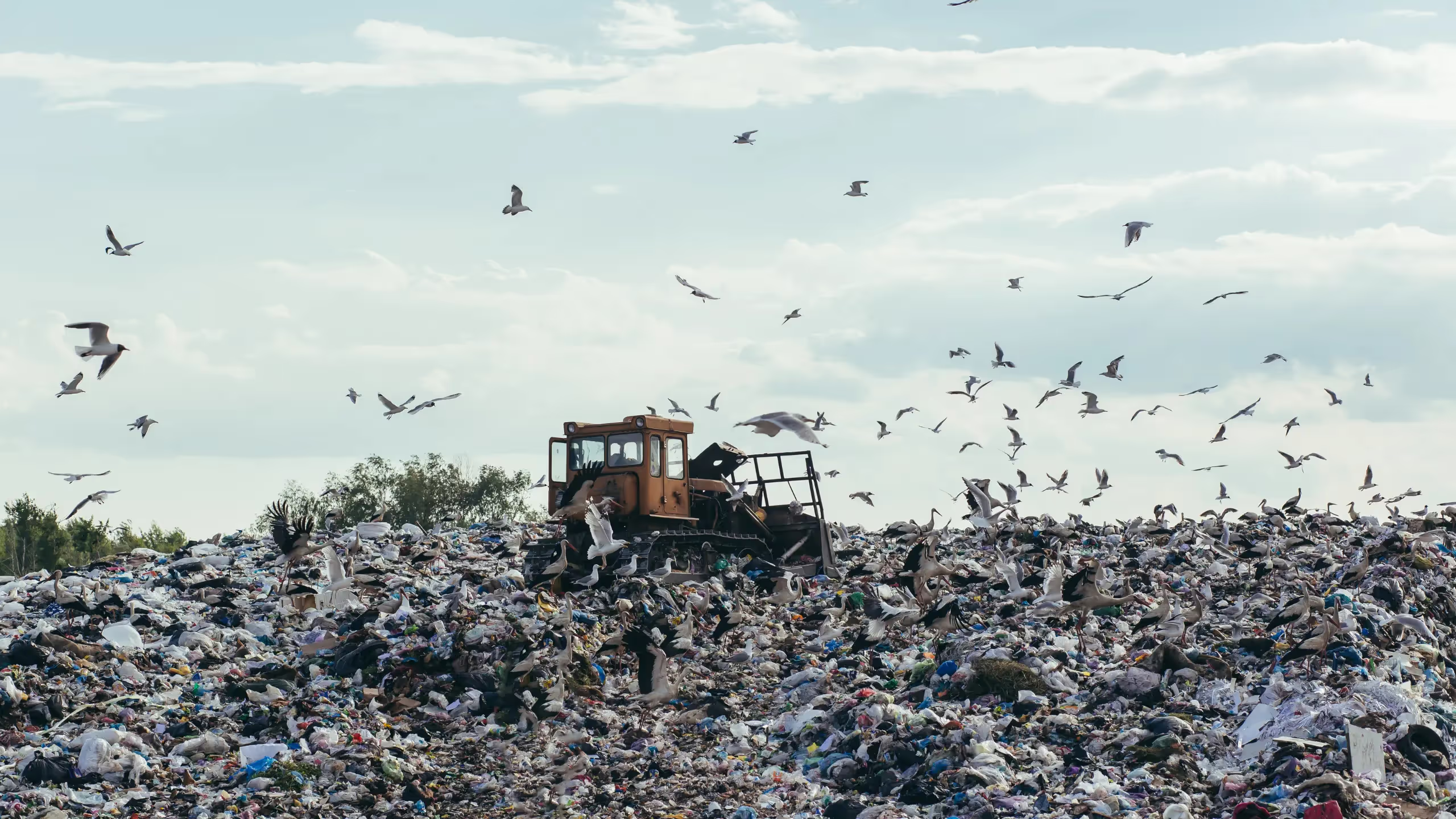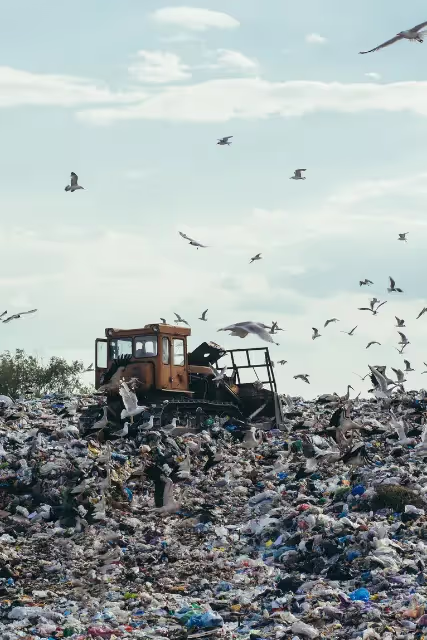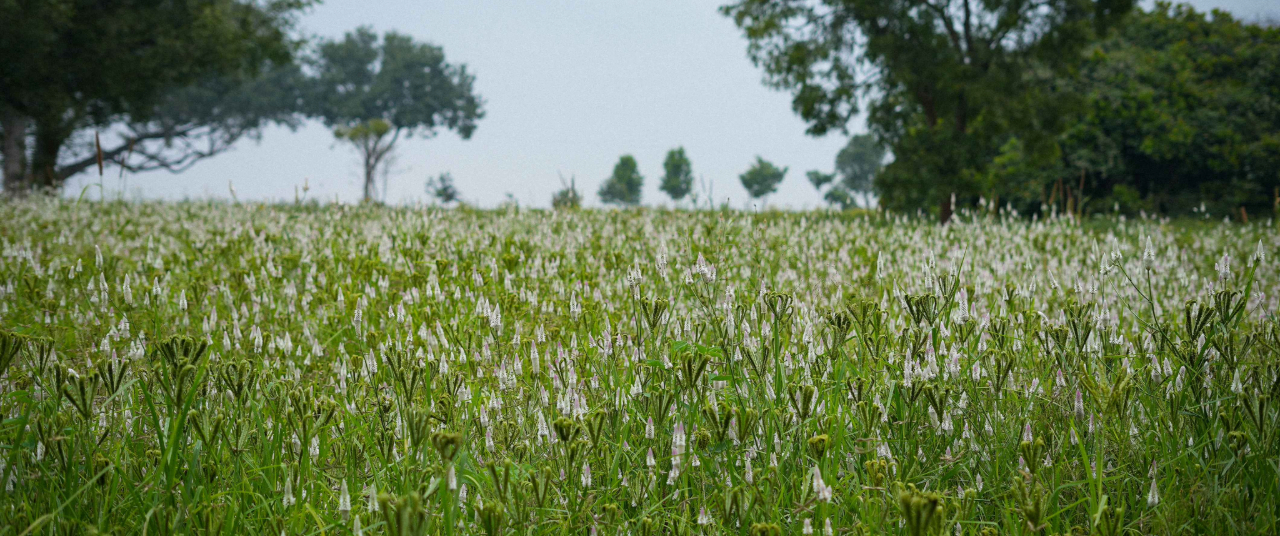Most of our waste ends up in landfills, which pose risks to public health and the climate






Editor's Note: In this series, the Good Food Movement explores composting—a climate-friendly, organic way to deal with waste. We answer questions about what you can compost, how to build composting bins and how this process can reshape our relationship with nature and our urban ecosystem.
If you’ve ever walked past a roadside garbage dump, you are familiar with the exact odour that overwhelms your sense of smell: a blend of rotten eggs, urine, and metal. You may scrunch up your face, pinch your nose, and hurry past on tiptoe, but it will be to no avail. The smell spares no one.
If a small roadside garbage dump creates such an effect, a designated landfill is only worse. The smell is potent enough to sting your eyes, soak through your clothes, and stick to your skin long after you leave it behind. And what you can’t smell, seeps into your veins: methane and carbon dioxide – odourless gases notorious for their role as greenhouse gases, which also restrict the body’s access to oxygen.
For many of us, walking away from the horridness of a landfill is easy. But thousands of people are subjected to this biohazard everyday—they collect, transport and manually scavenge this waste with little to no protection. As long as waste is indiscriminately generated in urban India, landfills will continue to pile up, and manual scavenging—which has deep roots in caste—will continue to be a reality.
Most international guidelines require at least a 500 m buffer zone around all landfills, and the Karnataka state government goes so far as to require a 1 km buffer zone around all landfills. By the government’s own admission, most buffer zones are encroached given the scale of overpopulation in most cities.
Every day, the Bengaluru Urban district generates 4593 tonnes of waste, of which 2399 tonnes (52%) is food waste. In reality, the amount of food waste is likely higher—these figures indicate the separated wet waste that made it to urban collection centres. The municipal corporation operates separate dry and wet waste processing centres. In certain areas, waste is composted or recycled before sending unreusable waste to landfills—for instance, out of the separated 2399 tonnes of food waste, only about 55% (1328 tonnes) gets converted to compost. At other centres, all waste is sent directly to landfills without processing.
Most gases in landfills come from anaerobic decomposition of organic matter—and over 45-60% of landfill gas is made up of the greenhouse gases mentioned earlier: carbon dioxide and methane. Though chemical waste like discarded metal, cosmetics and toiletries can still create toxic compounds like benzene, reducing organic waste in landfills is a sure shot way of reducing not only greenhouse gas emissions, but also the production of foul-smelling gases like hydrogen sulphide.
A costly affair
Bengaluru’s city municipal corporation, the Bruhat Bengaluru Mahanagara Palike (BBMP) has earmarked Rs. 1,400 crore for Bengaluru Solid Waste Management Limited (BSWML) for 2025-26. Of this 1,400 crores, it expects Rs. 750 crore to come from a newly implemented user fee for waste collection. This user fee has invited skepticism from both the public and the media, who disparagingly refer to it as 'garbage tax.' It ranges from Rs. 10 to Rs. 400 per month, and has been incorporated as a component of property tax since April 2025. BSWML currently spends around 590 crores per year on the collection and transportation of municipal solid waste. In a tender dated June 2025, it estimated the costs of secondary collection and transportation (i.e. transporting waste from processing centres to landfills) to be Rs 1,590 crore.
Let's be clear: this money is being used to drive our waste about 40 km every day—using fuel and blocking traffic only to end up in a landfill. Waste put in landfills does not go anywhere; rather, it becomes our heritage. Aptly called 'legacy waste', its informally agreed upon definition is waste that has languished in a landfill for more than a year. Formally, it remains undefined by any Indian authority.
Generally, urban local bodies are recommended to employ biomethanation when they are processing more than 50 tonnes per day (TPD) since it is only cost effective at scale. At a small scale, composting is championed because of minimal technology and investment requirements.
Not only does the waste in landfills take up valuable space, it damages the surrounding environment. It produces leachate, which is a contaminant formed when water flows through the waste, and results in groundwater contamination. Though modern landfills are lined with impervious materials like (ironically) plastic, some amount of seepage or leakage is inevitable in any landfill over a period of time.
As a Karnataka High Court judgement aptly states: 'Landfills are only temporary solutions and long term measures have to be initiated by all concerned authorities as a permanent solution.'
Landfills are also a health hazard to everyone living in their vicinity. In addition to damaging respiratory health, they also contaminate groundwater, crops, and even milk. Most international guidelines require at least a 500 m buffer zone around all landfills, and the Karnataka state government goes so far as to require a 1 km buffer zone around all landfills. By the government’s own admission, most buffer zones are encroached given the scale of overpopulation in most cities.
Also read: The circular bioeconomy movement can change how we see waste
Indian megacities’ need of the hour
If landfills are not a permanent solution, what is? In the Indian context, an effective approach that stands out is the circular economy. A circular economy is a system where instead of completing a linear life cycle and ending up as waste, materials keep getting circulated through processes like maintenance, recycling, or refurbishment. The subset of this philosophy that applies to bio-resources is called circular bio-economy, and deals with repurposing bio-materials.
Two fundamental pillars of the circular bio-economy are composting and biomethanation (the process of converting organic matter to biogas). Generally, urban local bodies are recommended to employ biomethanation when they are processing more than 50 tonnes per day (TPD) since it is only cost effective at scale. At a small scale, composting is championed because of minimal technology and investment requirements.
Eighty percent of Alappuzha households now have either biogas plants or pipe composting systems; the rest have their waste collected and sent to a municipal composting unit.
Currently, most of India's local bodies process some portion of their wet waste into compost or biogas, either outsourced or through municipal composters and biogas plants. Collectively the waste processed amounts to roughly 49.5% of the total wet waste collected nationally. But these figures vary widely internally across municipal bodies, and still involve transportation costs to municipal composting centres.
It is far more efficient to decentralise the process and set up small local composting units in individual houses or housing societies. The compost it yields can be used by resident gardeners and green spaces within housing societies. Excess compost can be sold to farmers or even nearby nurseries and serve as an additional source of income.
Also read: Don't dump it, compost it: Why peels and scraps shouldn't be tossed into your garden
Beacon of hope
However, this doesn’t mean that the onus of responsible waste management should shift from the state to the individual. Individual efforts can lay the bricks of change, but administrative support must bolster it. Some Indian cities have made phenomenal changes to their waste management system. The most notable of them is Alappuzha, Kerala, which was recognised by the United Nations Environment Programme (UNEP) as one of the world’s five most pioneering cities with respect to solid waste management.
The story of Alappuzha's transformation started with the people living next to the landfill refusing to allow waste disposal in their neighbourhood. After multiple failed negotiations, the municipality came up with a fresh framework for segregation and disposal. Eighty percent of Alappuzha households now have either biogas plants or pipe composting systems; the rest have their waste collected and sent to a municipal composting unit.
Similarly, the Indian Institute of Human Settlements (IIHS) launched a City-Farmer Partnership for Solid Waste Management in Chickballapur in Karnataka. Under this initiative, wet waste is collected from the municipal council, transferred to compost pits at farmlands, turned into compost, and given to farmers for free. Within just 6 months, over 109 farmers received 759 tonnes of compost.
Composting dominates conversations around soil rejuvenation, and rightfully so. But it has a paired benefit: reducing the strain on our solid waste management system. The circular bioeconomy flourishes when backed by administrative bodies that are deeply invested in equitable and sustainable civic care for its citizens. We must urge our governments to mobilise around the circular economy. And while we wait for policy to take shape, we must take ownership of the waste we generate. Composting is one of the simplest and most accessible ways to get our hands dirty, and change the fate of what would go into landfills to create something that fuels the land instead.
Also read: Trouble in your compost bin? Here are solutions for stink, slush and surprise guests
{{quiz}}
Explore other topics
References




.avif)


.png)



